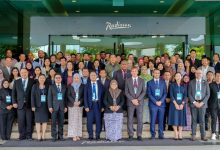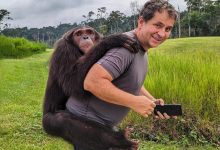Botswana is one of the few remaining destinations in Africa where the authentic safari spirit still survives. The country has lots of wide-open spaces and the wildlife to fill them. Nearly 40% of Botswana is made up of national parks and wildlife reserves which provide plenty of large areas for animals to roam. Botswana is home to the world’s largest concentration of African elephants, of which the highest concentration is found in Chobe National Park. Traveling by road through the parched desert can be tedious and dusty, with long stretches of empty space to look at and no towns in sight to relieve hunger and thirst.
HISTORY
The nation was originally inhabited by the San people (also known as the Bushmen), then the Tswana, a Bantu group. In 1885, it became the British protectorate of Bechuanaland (mainly to ward off encroachment by the Germans from the west and Boers from the south). Botswana became independent in 1966, peacefully and through a democratic process. Seretse Khama III was elected the country’s first president, a post he held until his death in 1980. President Festus Mogae was elected in 1998, secured a second five-year term in the October 2004 elections. The current president is Mokgweetse Eric Masisi. The president is both chief of state and head of government.
Diamonds were discovered in Botswana in 1967 and is now the largest diamond producer in the world. Diamond wealth has enabled the country to build up foreign currency reserves and economic stability. Botswana is a wealthy and stable country and it’s stability, accompanied by true multiparty democracy, has served as a model for sub-Saharan Africa.
GEOGRAPHY
Botswana is a landlocked country dominated by the Kalahari Desert in the south and west (more than two-thirds of the nation is desert). The northeast is characterized by gently rolling tablelands interspersed with granite kopjes, or hills, formed of giant rocks balanced upon one another in sometimes fantastic formations. In the northwest, the Okavango, the world’s largest inland delta, forms a network of swamps and lagoons.
CLIMATE
The best time to visit is during the dry season. August-October is best, but March-November is a great season as well. Nights are surprisingly cold during the dry season. Many of the Okavango Delta camps are closed at the height of summer from December to March), when it’s very hot and with daily thunderstorms and high humidity. Water levels are at their highest in June and August. The Okavango Delta shrinks considerably during the dry season, and by September, some of the wildlife viewing suffers in the outer fringes.
Global Travel News
-
UN Tourism Supports Members in Asia and Pacific in Data-Focused Capacity Building

Bandar Seri Begawan, Brunei, November 22, 2025 / TRAVELINDEX / UN Tourism…
-
UN Tourism Confirms Marina Novelli as New Chair of the World Committee on Tourism Ethics

Madrid, Spain, November 22, 2025 / TRAVELINDEX / The UN Tourism General…
-
Two Continents, One Passion: Award-Winning Pizzerias Unite for Historic Bangkok Collaboration

Bangkok, Thailand, November 22, 2025 / TRAVELINDEX / In an unprecedented culinary…
-
Extraordinary Travel Festival and Atlântico Business School Announce the 2025 MTI Rankings

Bangkok, Thailand, November 21, 2025 / TRAVELINDEX / The Extraordinary Travel Festival…
